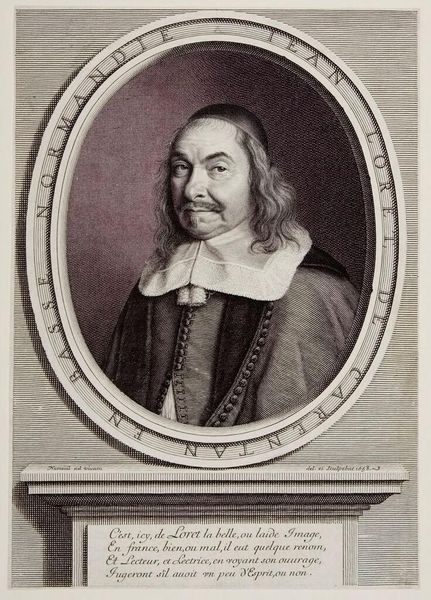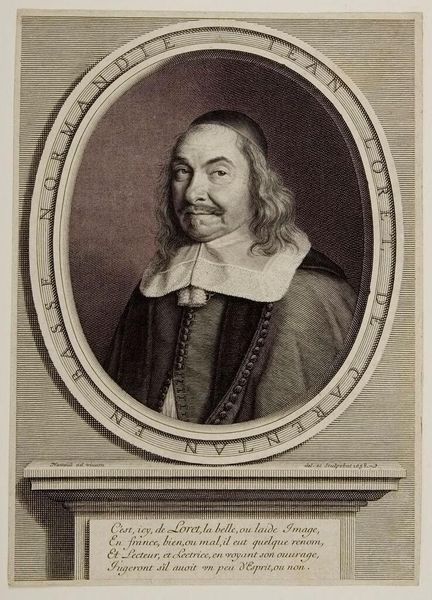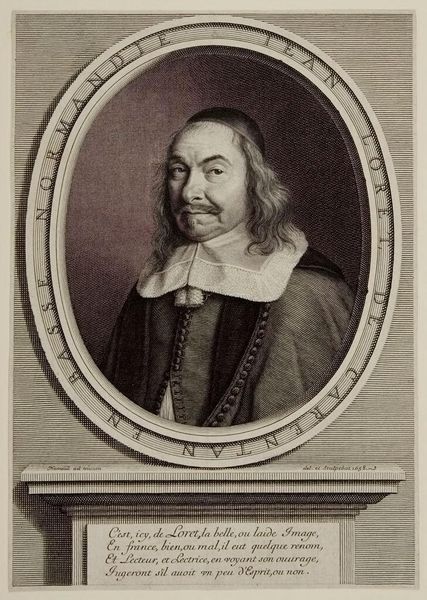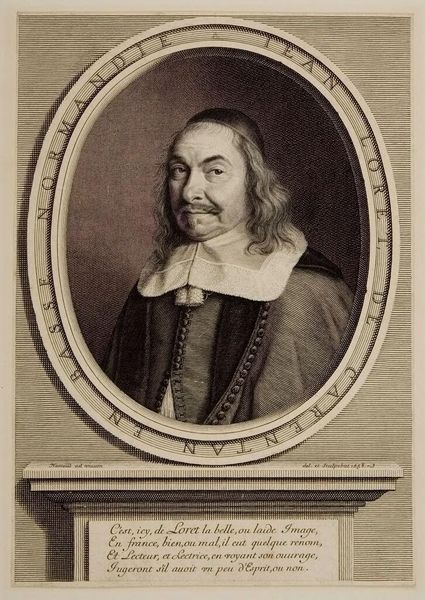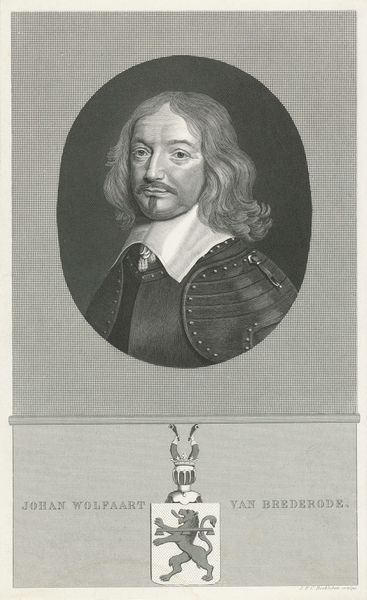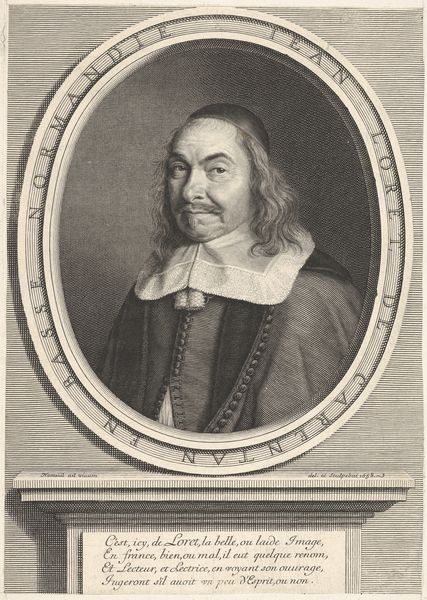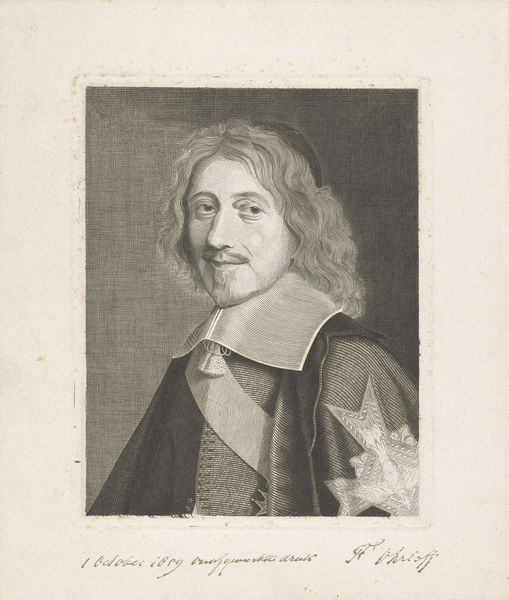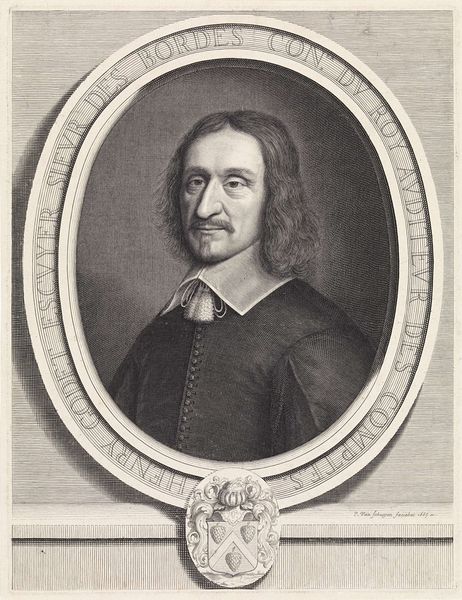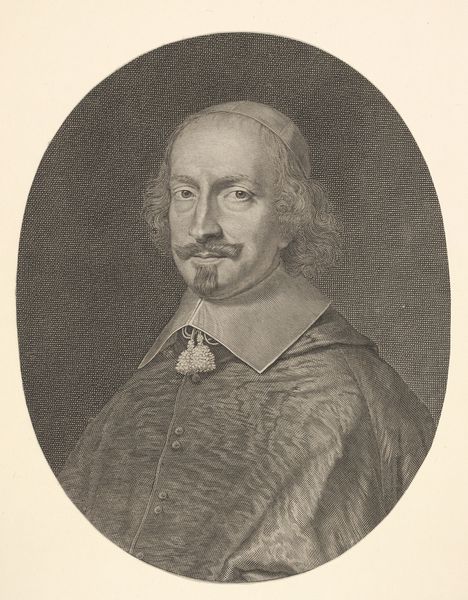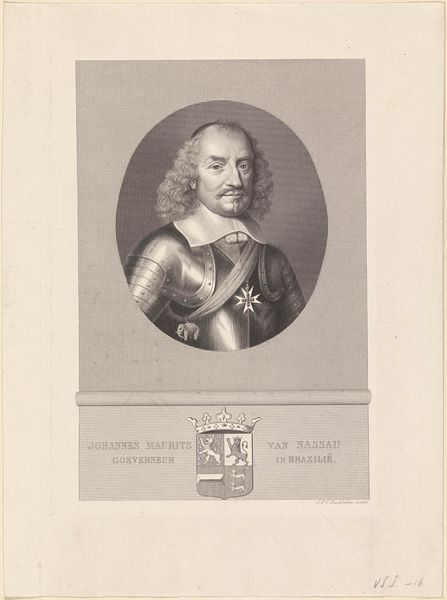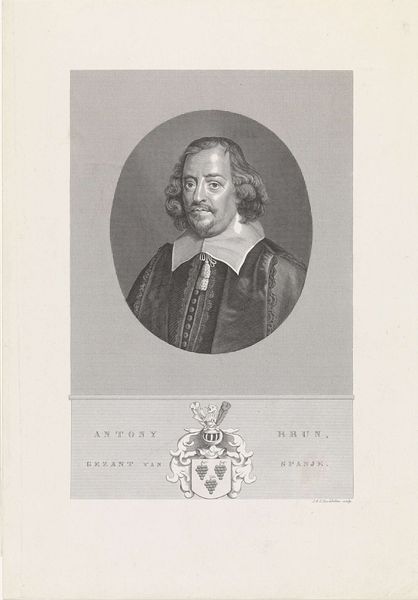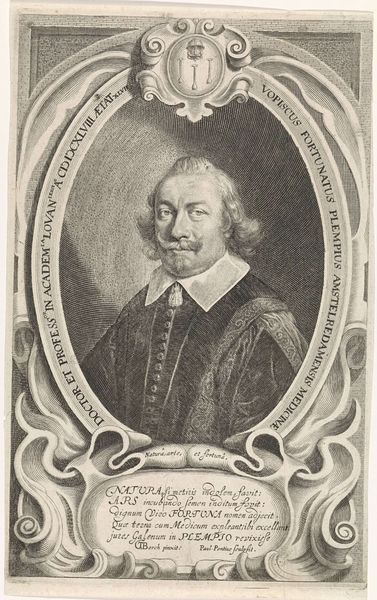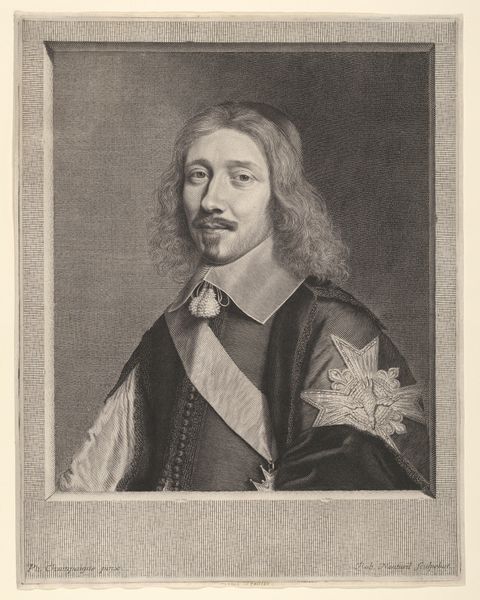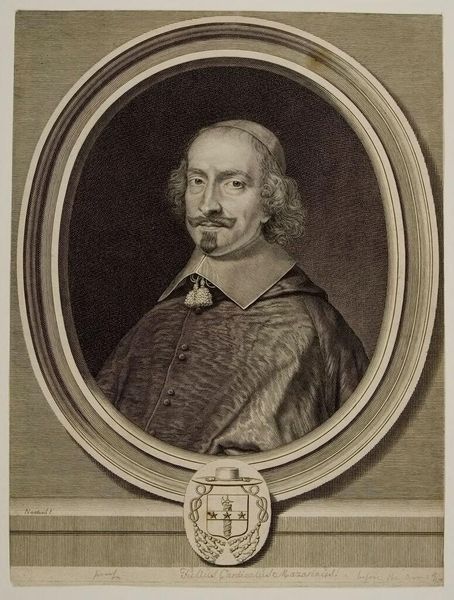
Dimensions: height mm, width mm
Copyright: Rijks Museum: Open Domain
Editor: Here we have Johannes van der Kellen's "Portret van Jean Loret," an engraving from 1863. It strikes me as very formal, and the level of detail achieved in this print is just incredible. What do you see in this piece, from a symbolic point of view? Curator: What captures me immediately is how the artist uses line to evoke both texture and character. Consider the lines etched to suggest the fall of light across the sitter’s face, versus the density used to describe his formal attire. Are we meant to focus on the man himself, or his societal position? It is an engraving of the 1863 but evokes the Baroque style and dress. Editor: I see what you mean about texture; his collar seems almost tactile. I hadn't thought about that potential conflict, though—the person versus the persona. Do you think it’s a deliberate choice, this ambiguity? Curator: Absolutely. Think about portraiture in general – what do we expect to see? An idealized representation? A candid glimpse? The trappings of status were a potent symbol of identity in the 17th century, as much as today. Notice how the formal elements nearly overwhelm the face, drawing attention to status over emotion. He doesn’t appear as happy or pleased, adding another level of analysis. What kind of feeling does this choice add for you? Editor: It makes him feel distant, almost like an artifact rather than a person. It is thought-provoking the levels of reading to achieve a personal understanding of an art object. Curator: Exactly! That feeling of distance allows us to engage with him as a symbol, as a historical figure representing specific social structures and cultural values, which brings both personal meaning and shared heritage alive through this image.
Comments
No comments
Be the first to comment and join the conversation on the ultimate creative platform.
